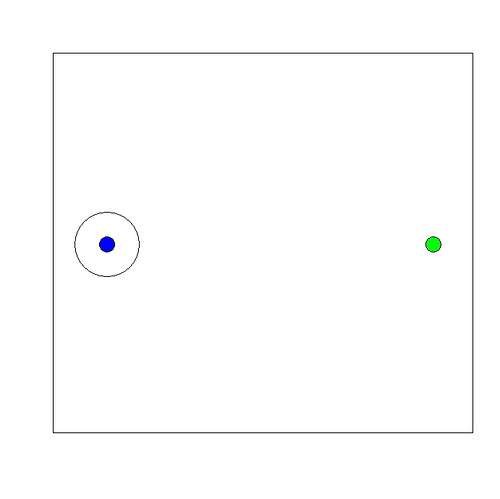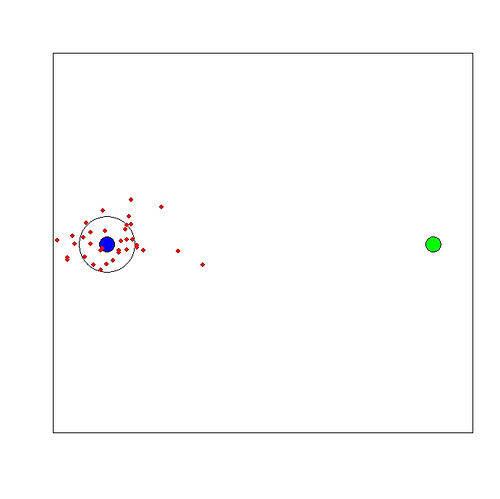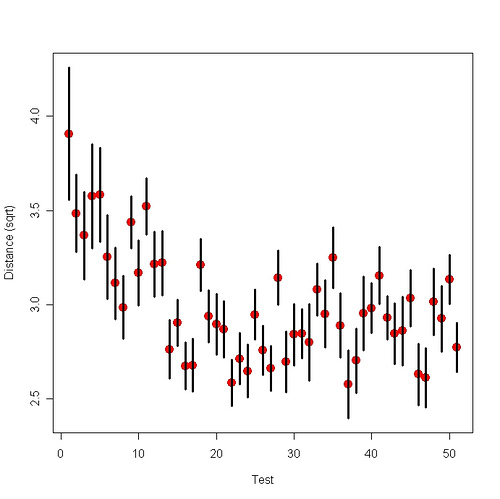After I saw that flaxseed oil probably affected my circle-game performance, I wondered how to make its effect clearer. One possibility was to change the input device. I was using the trackpoint on my Thinkpad to move the cursor; what about the touchpad? Might be a more natural task. So I played the game several times using the touchpad. I was a lot slower, presumably because in ordinary usage I’ve used the trackpoint.
I wondered: Could I get better on the touchpad? I made a little game to practice. Here is the initial screen.

You begin by moving the cursor to the green circle. Then with one movement — one fingerstroke — you move the cursor as close as possible to the blue circle. You “toss” it at the blue circle. You click where it ends up. It’s a lot like free-throw shooting and darts. You do that again and again; at the moment each test session consists of 35 “tosses”.
The outer circle around the blue circle is based on the previous 200 trials; the radius of that circle is the median distance. If I’m improving, I’ll be within the outer circle more than half the time.
Here are sample results (from the most recent session).

Here is my learning curve. The y axis is the average distance from where the cursor landed to the middle of the blue circle. The bars show standard errors.

I have collected a lot of data in my life. This particular dataset (data from about 1700 trials) was the easiest. To my great surprise, this exceedingly simple game is great fun! I have to push myself to not do it.
What makes games addictive? This game has 1. Hand-eye coordination. 2. Feedback. 3. Difficulty. It doesn’t have 1. Variety. 2. Action.
Part 1. Part 3: Interpreting the results.
Addendum. A poem called “ Needle’s Eye” in this week’s New Yorker ends like this:
what does it matter how big
a target you are? Someone somewhere
will invent a game to make you hard to hit.